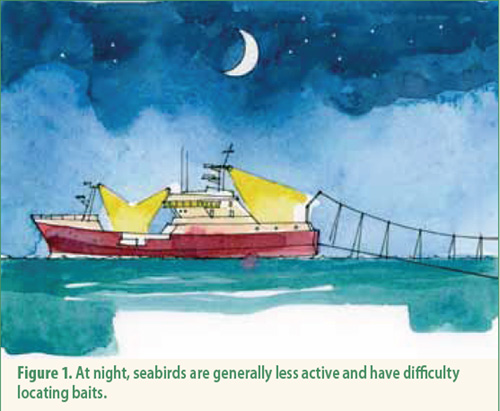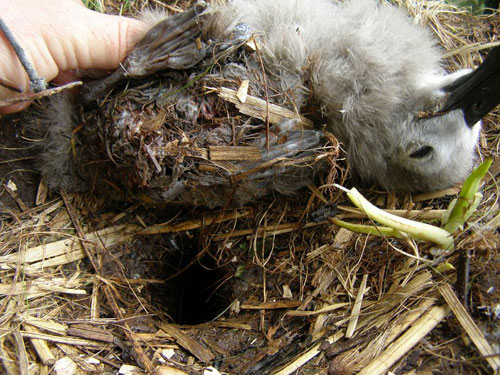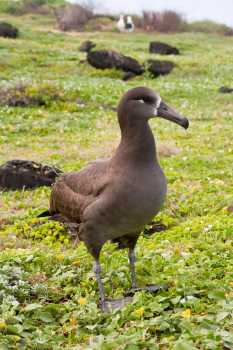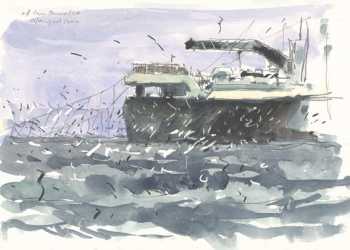In November last year the Indian Ocean Tuna Commission (IOTC) hosted a Technical Workshop for the Implementation of Measures to Reduce Seabird Bycatch in IOTC Longline Fisheries, held in Busan, Korea (click here). The Albatross and Petrel Agreement was represented by Anton Wolfaardt, Convenor of its Seabird Bycatch Working Group. Both ACAP and BirdLife International made presentations to the workshop on seabird bycatch and mitigation measures.
The report of the workshop (IOTC–2013–SBWS02–R) is now available on the home page of the IOTC website. The workshop considered the best-practice mitigation measures of night-setting, line weighting and utilization of bird-scaring lines.

Night setting is a best-practice mitigation measure
At the 18th Session of the Commission, held earlier this month in Colombo, Sri Lanka, it was agreed that CPCs (Contracting Parties and Cooperating non-Contracting Parties to the IOTC) who had had done already done so should adopt National Plans of Action - Seabirds and report on progress to its Working Party on Ecosystems and Bycatch (WPEB). The 10th Meeting of the WPEB will be held in Tokyo, Japan over 27 to 31 October this year (click here).
John Cooper, ACAP Information Officer, 26 June 2014

 English
English  Français
Français  Español
Español 


